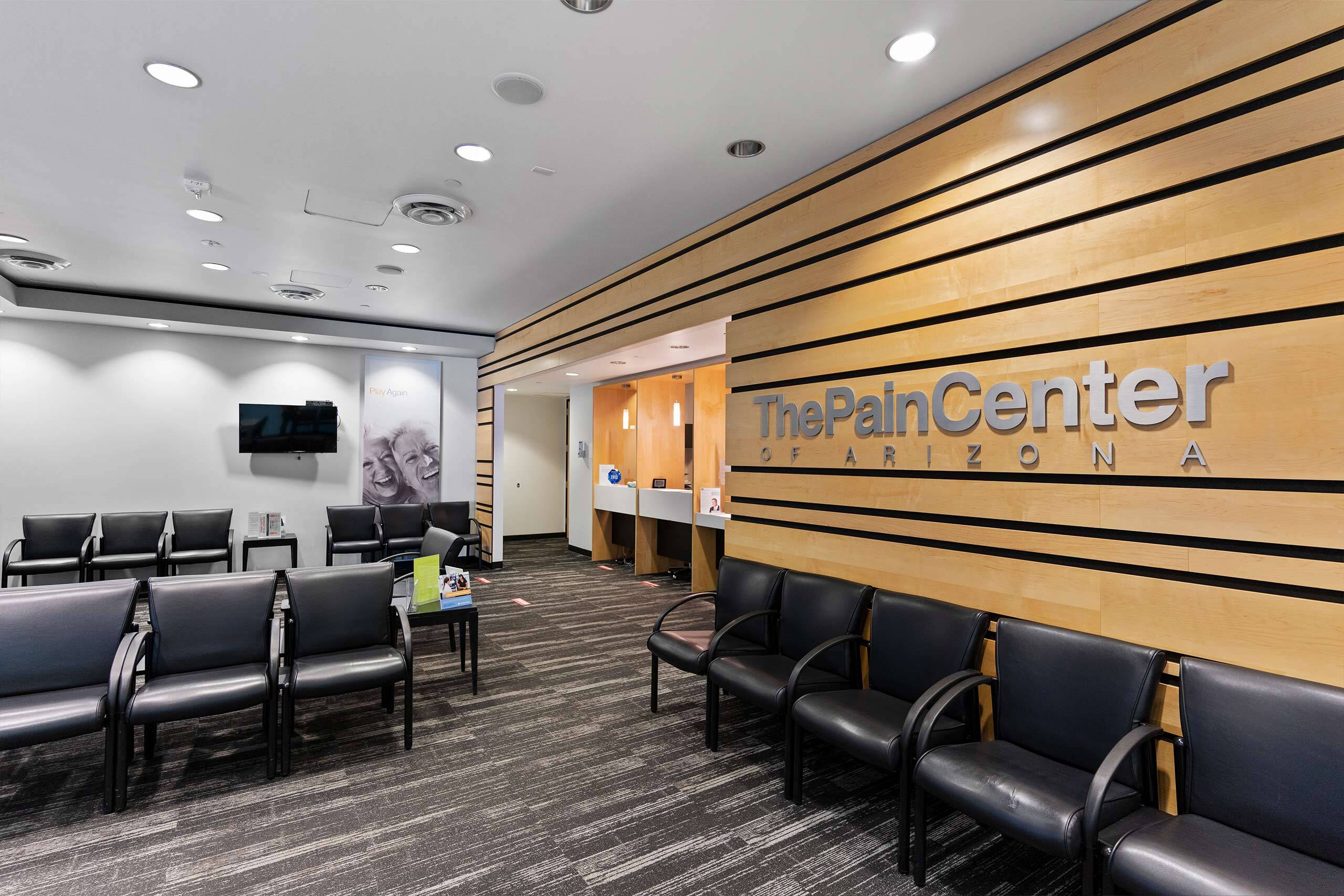Peripheral Nerve Stimulation
Peripheral nerve stimulation, or PNS, is a treatment technique for patients suffering from peripheral neuropathy and other neuropathic pain conditions. The procedure requires surgically implanting a small electrical wire (electrodes) along damaged peripheral nerves to deliver rapid electrical pulses. These pulses feel like mild tingles in the body, also called paresthesias, which help minimize pain symptoms. Similar to spinal cord stimulation, PNS requires a trial period before a permanent device can be surgically implanted. The PNS system is ideal for patients who have not experienced pain relief from conservative, alternative, and interventional therapies.



What is Peripheral Nerve Stimulation?
Peripheral nerve stimulation (PNS) is a treatment technique utilizing electricity to relieve patients suffering from peripheral neuropathy and other neuropathic pain conditions.
What Types of Pain Does Peripheral Nerve Stimulation Treat?
Pain caused by:
- Complex regional pain syndromes
- Nerve injuries (trauma or surgery-related)
- Chronic back pain (involving cluneal nerves)
How Does Peripheral Nerve Stimulation Work?
The procedure requires surgically implanting a small electrical wire (electrodes) along damaged peripheral nerves to deliver rapid electrical pulses. These pulses feel like mild tingles in the body, also called paresthesias, which help minimize pain symptoms.
Similar to spinal cord stimulation, PNS requires a trial period before a permanent device can be surgically implanted.
The PNS system is ideal for patients who have not experienced pain relief from conservative, alternative, and interventional therapies.

Expectations and Recovery
You’ll typically be released from the hospital within 1-2 days after your operation is completed.
Recovery will likely take about 6 weeks.
What Causes Chronic Back Pain?
Oftentimes, spinal issues typically cause only back pain. It could be caused by simply a muscle strain or other muscular problems, but there’s a wide range of possible causes, including:
- Ligament strain
- Herniated or ruptured discs
- Arthritis
- Fibromyalgia
- Skeletal structure problems, including bone fractures or bone spurs
- Osteoporosis
What Symptoms of Back Pain Should I Watch Out For?
Acute back pain typically lasts up to three months, whereas chronic pain lasts longer. Report all your symptoms to your doctor, especially acute or chronic back pain symptoms such as:
- Muscle ache
- Shooting, stabbing, or dull pain
- Pain radiating toward the neck or down the legs
- Decreased range of motion and flexibility
- Pain reduction with rest or minimal movement
Other Conservative Treatments for Chronic Back Pain
Studies show that physical therapy does well to reduce back pain in the short term. Even starting physical therapy early can help prevent later episodes of chronic back pain.
Additional procedures typically performed to treat chronic back pain include:
- Epidural Steroid Injections
- For short-term pain relief (typically 3-4 months), steroid injections can be used to treat neck and back pain and can be combined with physical therapy and exercise for maximum benefit.
- Nerve Blocks
- Therapeutic nerve blocks contain local pain medications that can control acute pain.
- Radiofrequency Ablation (Rhizotomy)
- A minimally invasive procedure in the neck, middle or lower back, that destroys nerve fibers in the back that carry pain signals. It is performed under fluoroscopy (live x-ray).
- Spinal Cord Stimulation
- If other therapies aren’t effective for treating your pain, an implantable pain management device can be an option. These devices administer mild electrical pulses to block the transmission of pain.

How Does TPC Nerve Stim Work?
TPC Nerve Stim is a minimally invasive solution for patients that have chronic and refractory pain that has failed a multitude of conservative therapies. Those therapies might include medication management or physical therapy, or even a host of injections. Most often, this pain relates to a specific nerve or nerve bundle that covers that area of pain. It might be what we call the dorsal root ganglion that’s at the spinal column level, or it might be out to a shoulder-specific nerve or a knee-specific nerve.
The TPC Nerve Stim utilizes two distinct minimally invasive surgical solutions for patients with conditions of refractory chronic pain that have failed conservative therapies. The dorsal root ganglion (DRG) or peripheral nerve solution is selected for the individual patient according to the patient’s unique presentation and context.
We will work with you to specifically determine which of these two options is best for you. That might cover lower abdominal pain or some component of chronic or refractory post-surgical pain. It might be hip, shoulder, knee, or ankle pain that has failed conservative therapies. We find and select the specific nerve and place a stimulator in that location, first with a trial to see if we get great coverage and to determine whether or not this brought you significant relief.
Currently, TPC utilizes solutions from Abbott and Nalu.
Abbott’s Proclaim DRG therapy is a non-opioid technology specifically designed to help manage chronic nerve pain due to causalgia (CRPS II) following surgery or from traumatic injury. Applications may involve refractory pain after knee, hip, or ankle surgery, as well as hernia repair, amputation surgery, and pelvic surgery. It works by sending mild electrical pulses to the nerves responsible for painful sensations.
Modulating the primary sensory neurons within the DRG is important for controlling peripheral pain as the DRG acts as a control center for peripheral sensory nerves. Amplification of incoming peripheral signals can lead to neuropathic pain. Modulating the hyperexcited DRG reduces pain and superior outcomes for focal chronic pain.

Expectations and Recovery
Focal stimulation of the DRG may offer patients superior pain relief compared to traditional spinal cord stimulation for CRPS and other focal chronic pain syndromes, including:
- Lower abdominal and visceral pain
- Chronic, refractory, and postsurgical pain (i.e., hip, knee, foot, etc.)
- Groin and testicular pain
- Phantom and stump pain (post-amputation)
- CRPS / RSD (localized foot / knee / ankle)
- Peripheral causalgia, CRPS II (specific nerve injury)


Get the care you need within 24 hours*
We know when you’re looking for relief for your chronic pain, you can’t wait any longer than you already have. This is why we can schedule you with an appointment within 24 hours at most of our pain centers across the Valley, so you can start your journey to life-long pain relief as soon as tomorrow.



